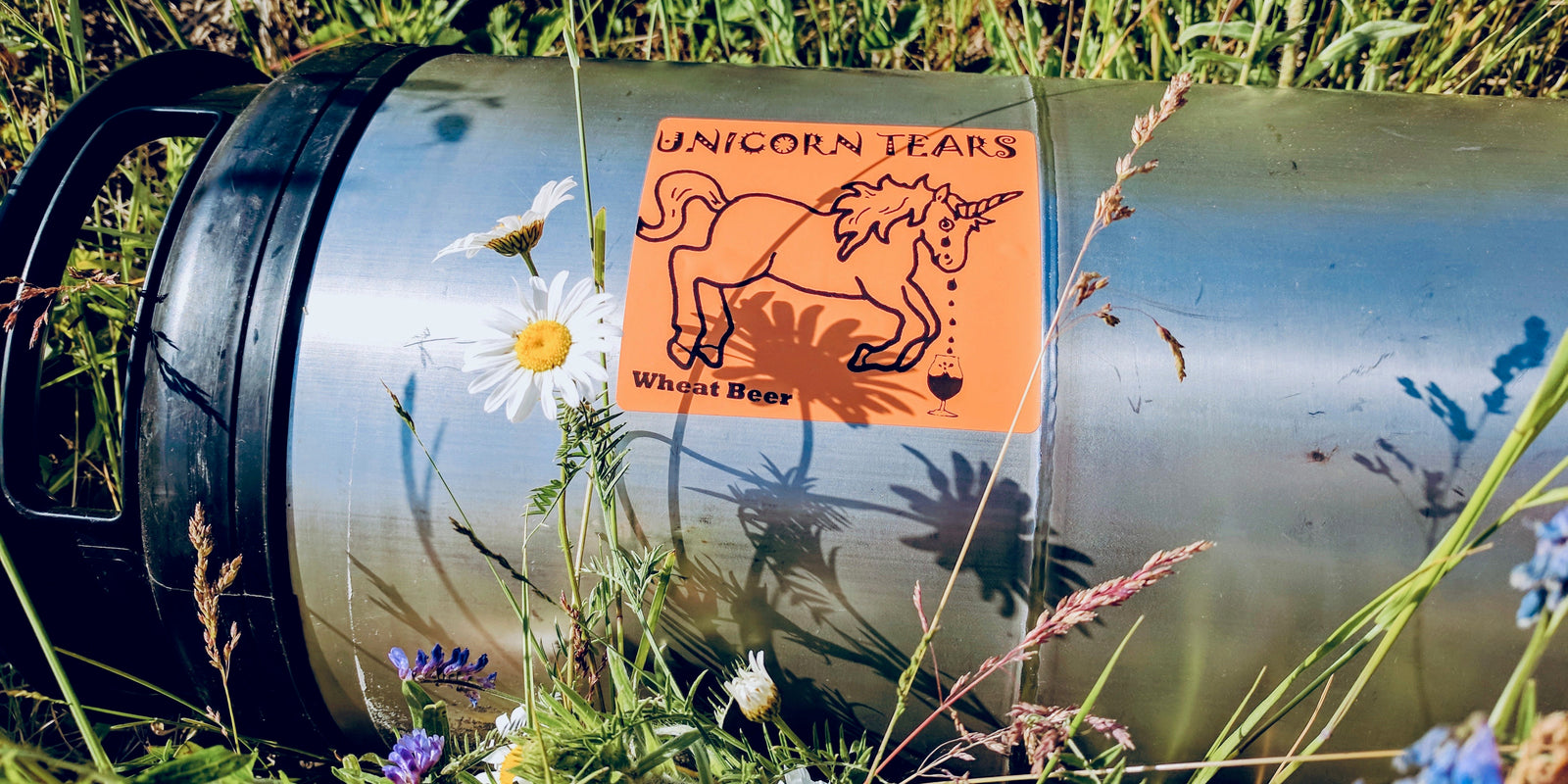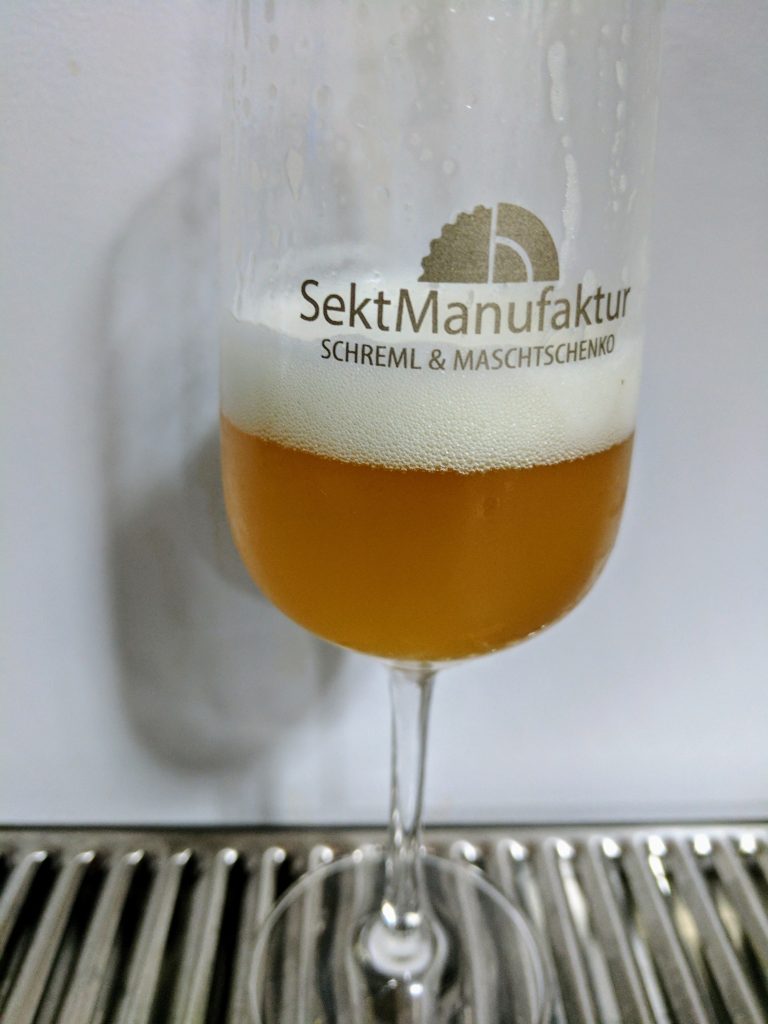INGREDIENTS & RECIPES
Try one of our peer reviewed recipes and ingredient kits! Each of these recipes are designed and hand crafted by the staff at KJ.
All kits include the required ingredients and instructions.
Try one of our peer reviewed recipes and ingredient kits! Each of these recipes are designed and hand crafted by the staff at KJ.
All kits include the required ingredients and instructions.
EQUIPMENT
Starter kits are a great way to get started brewing. Our different kits have everything you need to get that first batch cooking.
Starter kits are a great way to get started brewing. Our different kits have everything you need to get that first batch cooking.
Unicorn Tears - Hefeweizen Recipe
June 01, 2017 6 min read

Beer of the Month Program
June/July 2017 – Unicorn Tears 1
One of the best parts about making beer (aside from drinking it) is the social aspect. Brewers love to swap recipes, discuss what well or horribly wrong in their brews. We thought it would be a fun idea to start a beer conversation here. We’re going to make a beer every month here and encourage other brewers to make it as well. In the end, we’re hoping we can share our opinions and experiences with the recipe and crowd-source some improvements. The recipes will be easy to make and we will gladly assist new home brewers in the production of these beers. They will all be 5.5 gallons in size. We find that after fermenting and racking a 5.5 gallon batch turns into a standard 5 gallon batch pretty quickly.
At the start of every month we will post the recipe in store, as well as on our website, Facebook, Instagram, and Twitter. We will also have a set price for the recipe that will include a discount of up to 25%!
Unicorn Tears
Hefeweizen – 5.5 Gal (19L) – OG 1.054 – FG 1.012 – ABV 5.5% – IBU 22 – SRM 4
Unicorn Tears is the first of our outlandishly named wheat beer trilogy. Years after Unicorn Tears 1 came out we bumped up the hops and other ingredients to make them bolder and bigger like sequels should be. But here is the original Unicorn Tears – still a delicious classic, and a routine summer hit for our thirsty customers.
Crisp, with lots of banana and tropical fruit notes. Fermented dry but has that classic hefeweizen sweetness to it. This is a classic example of a simple, but delicious wheat beer.
Ingredients

Grains
- Wheat Malt x 5.5lbs
- Pilsner x 4.5lbs
- Munich Light x 1LB
Hops
- Saaz (4.0% Alpha Acid) – 1 oz @ 60min
- El Dorado (12.8% Alpha Acid) – 1 oz @ 5min
- El Dorado (12.8% Alpha Acid) – 1oz 5 day Dry Hopped
Yeast
- WB-06
Extras
- Irish Moss (1 tsp for last 15 minutes of boil)
- Dry Malt Extract (150-170g for priming at bottling)
Instructions
Mashing -> converting the grain into a fermentable liquid.
- Bring 6 gallons of water in your brew pot to 155°F. This is our strike temperature. Turn off the heat to the pot.
- Wrap the muslin/nylon bag around the brew pot and slowly pour all the milled grains into the bag. Stir them in while adding to prevent clumps. The addition of grain should drop the temperature down to 150-155°F.
- We want to mash the grain at 152°F for 60 minutes. It is very important to hold the temperature at 152°F. If the temperature rises above 155°F it hurts the fermentation, or if it dips below 149°F it can lead to a thinner tasting beer.
- The first 15-30 minutes are essential for the success of your brew. The temperature HAS TO BE IN THE RANGE OF 150-155°F. Sometimes adding the grain to the strike water does not lower the temperature enough, in this case add a little bit of cold water to bring the temperature down. Cover the pot with your lid and let it sit.
- Most brew pots will be able to maintain 152°F without adding heat for 20 minutes, we recommend checking the temperature every 15 minutes, and if it drops add more heat to bring it up. We recommend opening the lid and using a thermometer in the liquid.
- After 60 minutes, bring the temperature of the mashing grain up to 170°F and hold for 10 minutes. This is our mash out.
- Time to remove the grain. Lift the bag full of grain out of the brew pot. Let the liquid in the bag dribble into your wort. Once that is done, put the bag inside of a brewing pail, or another empty pot. There will be about 4 gallons of wort in the brew pot, we need to get it to 6 gallons before we can begin the next stage.
- Run warm water through the grains in the bag, aim for 170°f – let it run through the grains and add to the brew pot. Add until you reach 6 gallons.
- PSA: It is natural to think that the grains need to be squeezed to get all of the liquid out of them, DO NOT DO THIS. Aggressively squeezing the grains will lead to tannin extraction and a doughy taste in your beer. Lightly pressing the bag is fine, but do not try to squeeze every last drop out.
Boiling -> Hop Addition Time
- Bring 6 gallons of your wort to a rolling boil, and let it boil for 5 minutes, this is called the hot break. Add 1 ounce of Saaz hops and then start a 60-minute timer. Keep the wort boiling (212°f) and uncovered.
- With 15 minutes left in the timer add 1 tsp of Irish moss to the boil. If you have a wort chiller, we recommend adding it at the 15-minute mark.
- With 5 minutes left, add 1 ounce of El Dorado hops.
- When your timer goes off, take the pot off heat, and try to get the temperature down to 25°C as quick as possible.
- We love using a wort chiller for this, it can get the beer down to temperature in 20-30 minutes. Otherwise, you can immerse the brew pot in an ice bath, or wait it out. The longer it takes, the greater the risk of infection
Fermentation -> Turning the wort into beer
- After the boil is done it is time to be extra careful regarding sanitation. We recommend using a no-rinse sanitizer called Starsan. Mix ¼ tsp of it with water in a 500ml spray bottle. Before we touch any part of the beer, we spray it with Starsan.
- Transfer the cooled wort into your fermenting pail or carboy. Run it though a strainer to catch any hop or grain residue.
- It is also an important time to take a hydrometer reading. It should be around 1.054 give or take a few points.
- Your choice of fermentation vessel is important. During primary fermentation, it will bubble up quite a bit, you want to be sure there is airspace for it to work away. Otherwise, the pressure of it will push out the airlock.
- Make sure the wort has been cooled to at least 25c!!! Adding yeast at a higher temperature will likely kill it.
- Once the beer is in the fermenter, pour in the entire package of WB-06 Yeast into the fermenter.
- Put the bung and airlock in the hole (make sure there is water filled up to the line in the airlock). If using a pail, make sure the lid is sealed tight. Put the pail in a room that is in the range of 20-22°C.
- The beer fermentation will take about 10-12 days total. We will be adding dry hops on day 5.
-
DRY HOP TIME: Fermentation will be quite vigourous for the first couple of days, we want it to slow down before adding dry hops, typically this will be around the 5th of fermentation. On day 5, add 1 ounce of El Dorado hops to the bucket.
- Try to add the dry hops as quickly as possible. We like to remove the bung and quickly pour the hops through that hole. If you need to remove the lid of the pail, we recommend adding a dissolved mixture of 100g dextrose and water with the dry hops. This will stimulate a bit of fermentation which will create more CO2 preventing oxidization.
- After 10 total days of fermentation have passed, take a hydrometer reading. It should be somewhere between 1.010-1.015.
- Unless you are kegging, we recommend proceeding to the bottling stage. Clarification can occur in the bottle rather than in a carboy, and the risk of oxidization is greatly reduced.
Bottling -> We’re getting close to Beer Time now.
- Rack the now fermented beer into a bucket.
- Because of how many hops are in the beer, we recommend wrapping a muslin bag with a zip tie on the output of your siphon tube. This will catch any hop debris in the pail.
- At the same time, mix the priming sugar with 200ml of boiling water and add to the beer. Stir it in VERY gently.
- Rack the beer into your bottles or growlers. Then, let them sit for 2-3 weeks at room temperature. Chill and enjoy!
